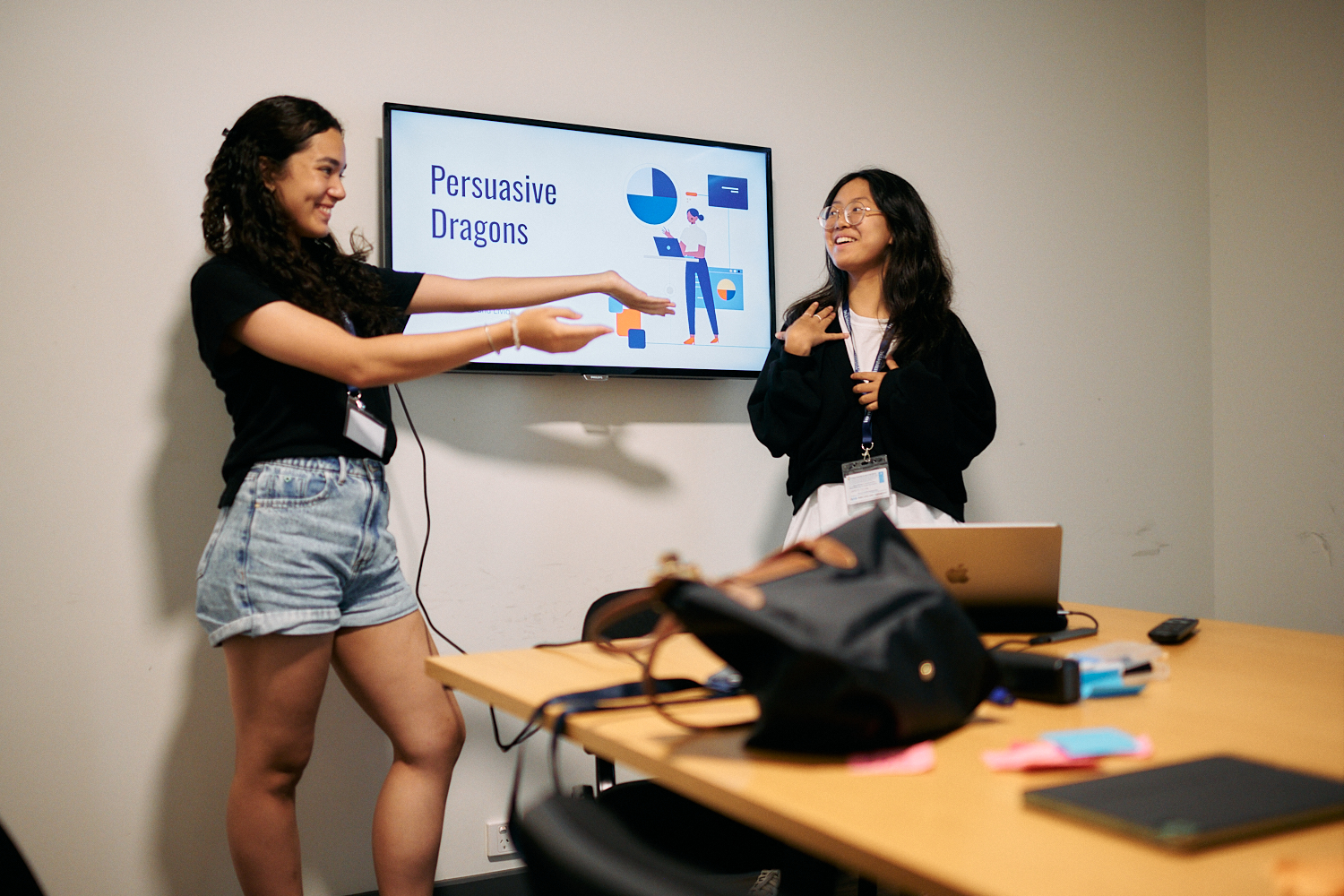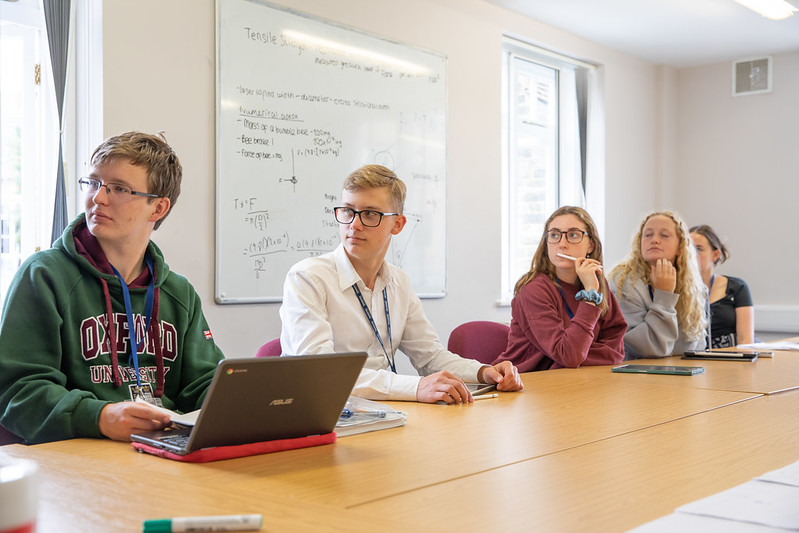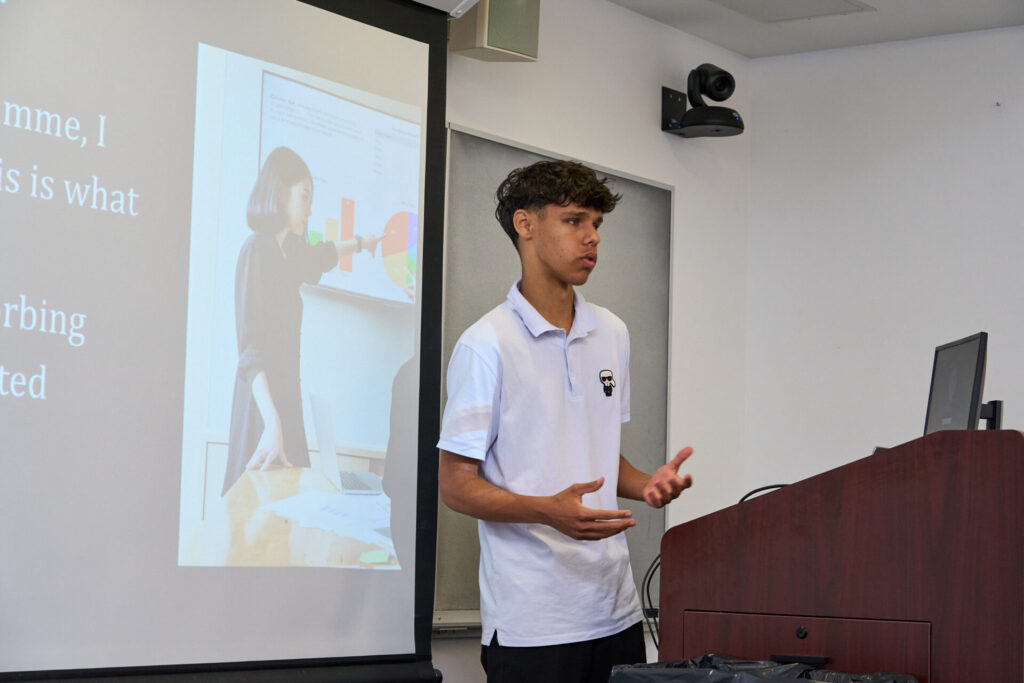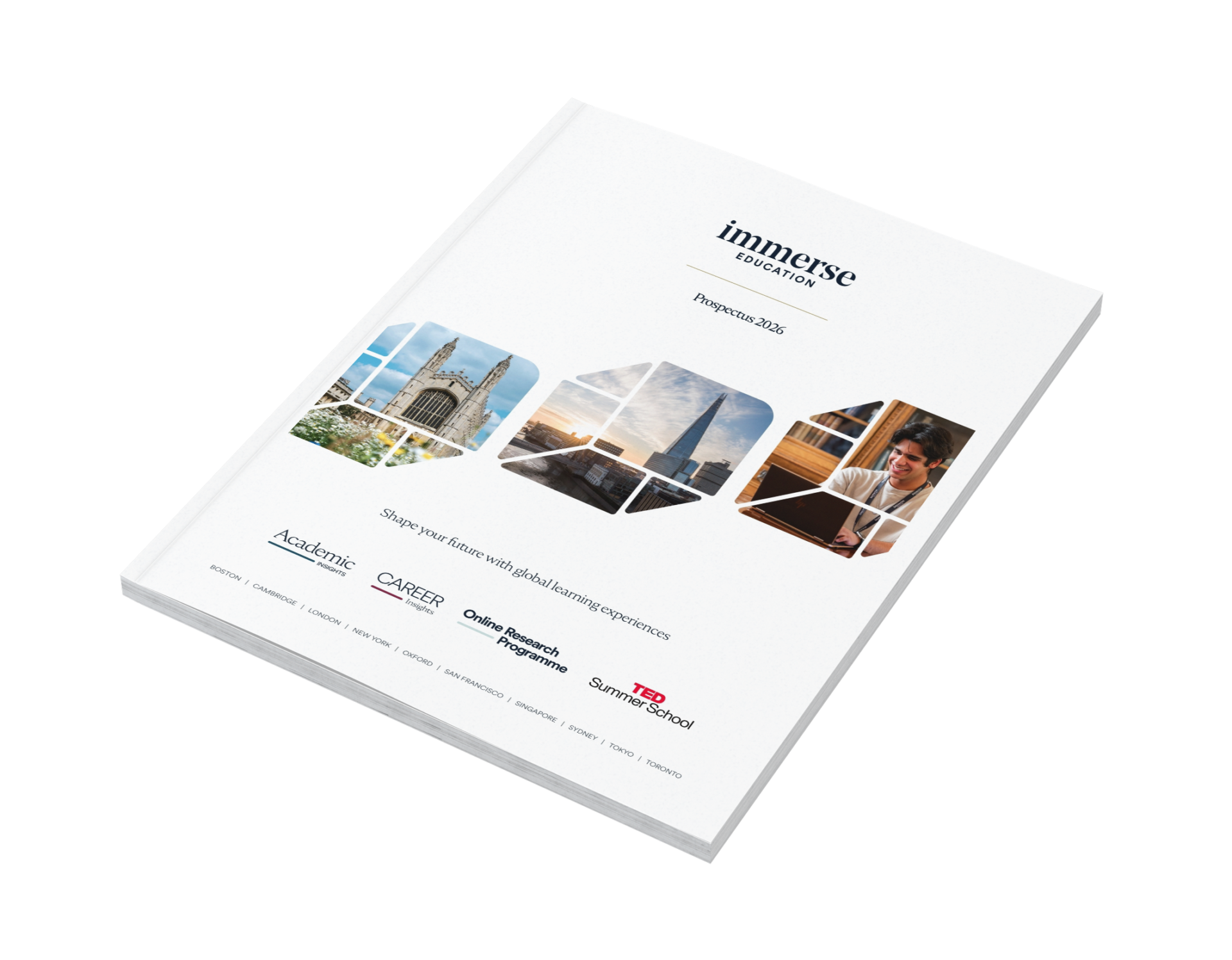“Communication works for those who work at it,” said John Powell. Every great leader knows that words can inspire, influence, and unite. Learning how to improve communication skills gives you the power to share ideas that matter and connect meaningfully with others.
At Immerse Education’s TED Summer School, you’ll explore how clarity, empathy, and storytelling transform ordinary speaking into unforgettable communication. You’ll practise the same techniques that make TED speakers memorable and confident.
Through purposeful speaking and active listening, you’ll discover that communication isn’t just about talking. It’s about leading with authenticity and vision.
What Is Effective Communication?
Effective communication is the ability to share ideas, emotions, and information clearly so that others both understand and feel understood. It involves more than speaking well; it requires empathy, active listening, and clear intent.
A 2021 study by Musheke and Phiri from the University of Zambia, published in the Open Journal of Business and Management (SCIRP), found that effective communication positively influences organisational performance.
Their analysis showed a statistically significant correlation (r = 0.267, p < 0.05) between communication quality and improved performance. The authors concluded that effective communication strengthens collaboration and helps organisations achieve their goals.
Strong communication reduces misunderstandings, builds trust, and encourages innovation, whether you are presenting ideas, leading a discussion, or working within a team.
The Different Types of Communication
There are four main types of communication: verbal, nonverbal, written, and visual. Each plays a distinct role in how we share ideas and connect with others.
- Verbal communication: The use of spoken words to express ideas, build rapport, and engage in discussion. In presentations or leadership settings, tone, pacing, and clarity shape how your message is received.
- Nonverbal communication: Includes body language, eye contact, posture, and facial expression. Some may even say that nonverbal cues often convey more emotion than words, influencing trust and understanding.
- Written communication: Involves recording ideas through essays, reports, or digital correspondence. It builds precision, structure, and professionalism, which are vital for academic and workplace success.
- Visual communication: Uses imagery, slides, or infographics to simplify complex ideas and enhance engagement. Strong visuals help audiences remember information and feel inspired by your message.
The most effective communicators combine all four forms, adapting their approach to connect meaningfully with every audience.
What Makes a Great Communicator?
A great communicator connects through clarity, empathy, and authenticity. They know how to adapt their message so it resonates with different audiences and situations.
Strong communicators listen as actively as they speak. They observe tone, expression, and context to understand others fully. This ability to listen deeply and respond thoughtfully creates trust, which is the foundation of effective leadership.
Great communication also depends on confidence and self-awareness. When you understand how to improve communication skills, you learn to be genuine rather than perfect, and to express ideas with purpose. As TED speakers show, people remember how you make them feel even more than what you say.
At Immerse Education’s Business Management Summer School, you’ll explore communication as a core leadership skill. You’ll refine empathy, negotiation, and collaborative problem-solving through real-world activities.
By learning to communicate fairly, manage differences, and identify opportunities for value creation, you’ll gain the confidence to lead with clarity and purpose; skills that prepare you for success in university, your career, and beyond.
Join the Immerse Education 2025 Essay Competition
Follow the instructions to write and submit your best essay for a chance to be awarded a 100% scholarship.
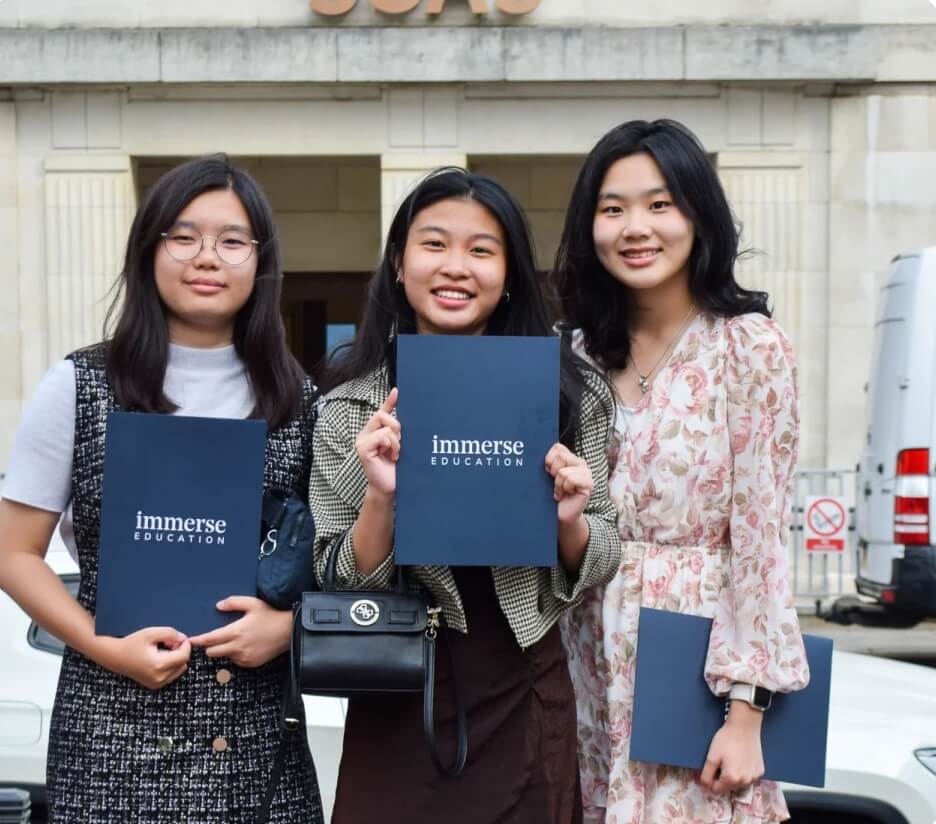
The TED Approach to Effective Communication
TED Talks are known for turning simple ideas into powerful messages that inspire change. They show that great communication is not about speaking perfectly but about connecting authentically.
At Immerse Education’s TED Summer School, you’ll explore how TED speakers use purpose, storytelling, and simplicity to make every message memorable.
Here are some TED-inspired approaches to effective communication that you can start practising today.
Start with Purpose
Every powerful message begins with purpose. Before speaking, ask yourself, “What do I want people to remember or feel?” A clear sense of purpose gives your words direction and meaning.
In her TED Talk “The Power of Purpose,” Prerana Issar explains that defining and living with purpose transforms the way people act and lead. She shows that when we express our purpose clearly, it inspires trust, motivation, and a shared sense of direction.
When you speak from purpose, you’re not just informing; you’re influencing. Audiences remember your clarity and conviction because they can sense what drives you.
Tell Stories That Stick
Stories are at the heart of powerful communication. They turn facts into feelings and transform abstract ideas into something people can see and remember.
TED speakers like Karen Eber and Julia Dhar show how storytelling builds connection and clarity. Eber explains that stories activate areas of the brain linked to emotion and empathy, helping listeners retain information. Dhar demonstrates that personal experiences and relatable examples make even complex arguments easier to understand and connect with.
A strong story follows a simple arc: context, challenge, and change. It gives your listener a reason to care and a path to follow. When your message is built around a story that feels authentic, people are more likely to trust it, remember it, and act on it.
Keep It Simple and Authentic
The most memorable communicators don’t rely on complex language or polished scripts. They focus on clarity, honesty, and genuine connection.
TED speakers are effective because they sound real. They use simple language, share one clear idea, and speak with natural rhythm and presence. This approach helps audiences relate to them and remember their message.
Simplicity makes ideas understandable. Authenticity makes them believable. When you remove unnecessary words and speak from experience, your message carries weight. The goal is not to impress your audience but to involve them, to make them feel part of your story.
True communication happens when people don’t just hear you but feel that you mean what you say.
Practical Tips to Improve Communication Skills
Improving communication takes time, reflection, and consistent practice. If you want to understand how to improve communication skills, study TED speakers; the best communicators refine their abilities through preparation, feedback, and genuine curiosity about others.
These practical strategies are designed to help you strengthen how you speak, listen, and connect in every setting.
Tip 1 – Prepare and Plan with Purpose
Every confident communicator begins with thoughtful preparation. Before you speak, clarify what you want your audience to learn, feel, or remember. A clear purpose gives structure to your message and strength to your voice.
TED speakers prepare intensively, refining their ideas until they are focused and meaningful. They anticipate questions and practise until delivery feels natural.
Preparation builds confidence and clarity. When you plan with intention, you can speak with purpose, connect authentically, and make your ideas resonate.
Tip 2 – Be Clear, Concise, and Confident
A muddled message confuses. A clear one commands attention. Great communicators focus on simplicity, not showmanship.
Being concise means saying what matters and leaving out what doesn’t. Use short sentences, strong words, and a steady pace to hold attention. Clarity shows confidence. When your message is focused, your audience trusts you.
Speak with calm assurance and let pauses give your words weight. Confidence is not about volume; it’s about control and conviction.
Tip 3 – Practise Active Listening and Presence
Great communicators don’t just speak well; they listen deeply. Active listening means giving full attention to others without rushing to respond.
In his TEDx talk “How to Actively Listen to Others,” Scott Pierce explains that real listening happens when you are fully present and genuinely curious. It’s about focusing on words, tone, and emotion rather than waiting to reply.
When people feel heard, they trust more and share more. True communication begins when both sides feel valued and understood.
Tip 4 – Master Nonverbal Communication
“The most important thing in communication is hearing what isn’t said.” — Peter Drucker
Nonverbal cues often reveal more than words. Your posture, facial expression, and gestures shape how others interpret your message.
Confident communicators use open body language and steady eye contact to build trust. Small shifts, such as a smile, a nod, or relaxed shoulders, can make communication warmer and more engaging.
When your tone, expression, and presence align, your message feels genuine, powerful, and impossible to ignore.
Tip 5 – Manage Nerves Through Calm and Control
Even TED speakers feel nervous. The key is not to eliminate fear but to manage it.
Calm begins with breathing. Slow, steady breaths lower your heart rate and centre your focus. Visualise success and remind yourself why your message matters more than your nerves.
Confidence grows through control, not perfection. When you stay calm, your voice steadies, your posture relaxes, and your ideas shine. Nerves are energy. Learn to channel them into presence and power.
Tip 6 – Tell a Story that Connects
A good story captures attention, but a great one creates connection. Stories turn ideas into emotions and make messages memorable.
A study titled Stories, Statistics and Memory found a 73 percent drop in belief impact for statistical information after one day, compared with only 32 percent for stories. Stories stay with us because they engage emotion as well as reason.
When listeners see themselves in your story, they remember your message long after it ends.
Tip 7 – Watch Your Tone and Word Choice
Have you ever said something with good intentions, only to have it misunderstood? Your tone may have spoken louder than your words.
Tone shapes emotion, and emotion shapes understanding. The same message can sound calm or confrontational depending on how it is delivered.
Choose words that are clear and inclusive, and speak with warmth and confidence. When tone and language align, your audience feels respected and engaged. What you say matters, but how you say it leaves the lasting impression.
Tip 8 – Build Confidence Through Practice
Confidence grows through repetition and reflection. Every time you practise, you strengthen both your message and your mindset.
In her TED Talk “Your Body Language Shapes Who You Are,” Amy Cuddy explains that posture influences confidence. Standing tall and using open gestures can shift how you feel and how others perceive you.
Rehearse out loud, record yourself, and notice how you sound and move. Practice turns nervous energy into focus. The more you prepare, the more naturally confidence follows.
Tip 9 – Be Empathetic and Inclusive
Chimamanda Ngozi Adichie’s TED Talk “The Danger of a Single Story” reminds us that no one’s experience can be defined by a single perspective. When we listen to different stories, we understand the world more completely.
Empathy begins with curiosity and respect. It means asking, not assuming, and recognising the value in every voice.
Inclusive communicators choose language that reflects awareness and openness. When empathy guides your words, your message builds connection, not division.
Tip 10 – Seek Feedback and Keep Improving
Great communicators never stop learning. Feedback is not criticism; it is a mirror that shows how others experience your message.
Ask trusted peers, mentors, or tutors for honest impressions of your clarity, tone, and delivery. Listen carefully and apply what you learn.
Every conversation is a chance to refine your skill. Improvement comes from reflection and persistence. The more you practise and seek feedback, the stronger, clearer, and more authentic your communication becomes.
Why Communication Skills Matter Beyond the Classroom
When you improve your communication skills, you open doors far beyond academics.
The ability to communicate your purpose clearly is what sets great leaders apart. Clarity, empathy, and authenticity allow you to connect with others, build trust, and turn ideas into action.
Here are 5 real-life benefits of strong communication skills.
Five Real-World Benefits of Strong Communication Skills
- Career and Leadership Advancement – Communicating with confidence helps you present ideas effectively, lead teams, and inspire others. These skills are vital for professional success and long-term leadership growth.
- Global and Cultural Connection – Effective communication helps you build relationships across cultures. You learn to adapt, empathise, and collaborate, preparing you for international study and global career opportunities.
- Personal Confidence and Influence – Expressing ideas clearly strengthens your confidence. You develop presence, earn respect, and inspire others in interviews, public speaking, and professional networking.
- Problem-Solving and Decision-Making – Good communication helps you analyse situations clearly, listen to diverse perspectives, and reach informed, balanced decisions that strengthen your leadership and teamwork abilities.
- Lifelong Learning and Growth – Strong communication supports continuous learning. By asking questions, reflecting on feedback, and sharing ideas, you keep improving your understanding and adaptability in every stage of life.
How Immerse Programs Build Communication Skills in Real Life
At Immerse Education, you’ll do more than learn theory; you’ll live it. Every activity helps you apply what you learn about how to improve communication skills in real, practical settings.
Through our TED × Immerse Summer School, the learning journey follows a clear structure: Discover → Shape → Share.
- Discover: Identify your passions, explore global themes, and uncover ideas that define your perspective.
- Shape: Turn your ideas into compelling stories through writing, discussion, and feedback.
- Share: Present your talk to a live audience, recorded professionally to showcase your growth.
At our Cambridge Summer School, you’ll collaborate with ambitious peers through masterclasses and interactive workshops. You’ll develop communication skills through group discussions, receive real-time feedback, and refine your presentation skills with individual coaching.
Communication at Immerse is not only about speaking; it is about thinking critically, connecting deeply, and leading confidently.
Your Voice is Your Superpower
When you learn how to improve communication skills, you unlock the ability to influence, inspire, and connect.
Like TED speakers, you grow through purpose, presence, and practice. Each conversation becomes a chance to lead with empathy and clarity.
Through our TED Summer School, you’ll discover how to express ideas that matter and develop the confidence to share them with the world.
Your voice is more than a tool; it is your superpower. Use it to shape ideas, spark understanding, and create change.




